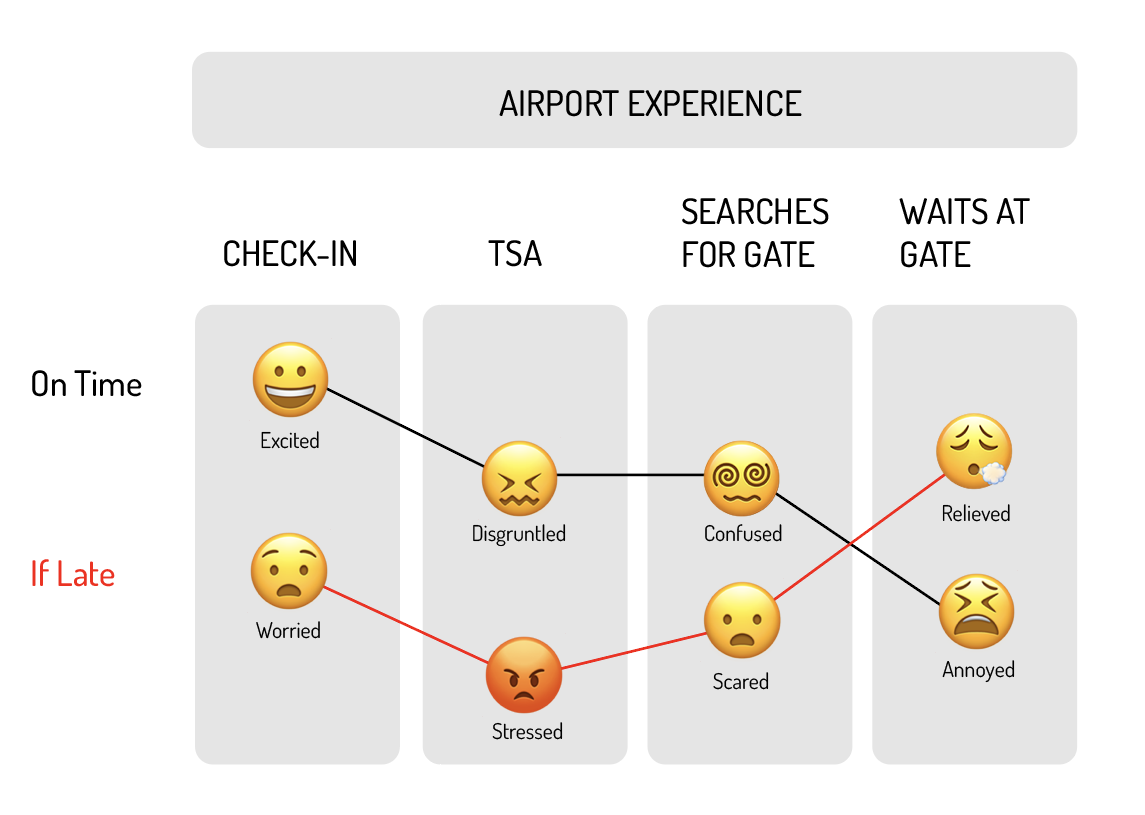This is Part 2 of a series on ethical design
–––––
In Part 1, we talked about the need for UX Compassion. Compassion is the awareness of others’ suffering paired with the desire to alleviate that suffering. We’re most used to thinking about UX empathy with regards to compassion surrounding accessibility. Good UX is designed with compassion for differently abled users and takes into account those users’ contexts, abilities and limitations. We recognize the context with which others are meeting our designs and strive to alleviate any suffering or difficulty they may have. In essence, empathy is the foundation for understanding, while compassion is the activated desire and commitment to act on that understanding for the user's benefit.
Designing for challenging digital moments
Navigating the digital world isn't always a smooth, delightful journey; in fact, it's often fraught with moments that can trigger genuine frustration and anxiety. Compassionate UX recognizes that these "challenging moments" are where design can truly shine, transforming potential breakdowns into opportunities to build trust and demonstrate care.
Alleviating error message frustration
Consider, for instance, the common hurdle of an error message. Instead of a cryptic code that leaves a user utterly lost and possibly blaming themselves, a compassionate design offers clear, human-readable language explaining what went wrong, why it happened, and, most importantly, how to fix it. Perhaps it suggests checking an internet connection, re-entering a password carefully, or even providing a direct link to support if the issue is more complex. This empathetic approach turns a moment of confusion and potential self-reproach into one of guidance and reassurance, making the user feel supported rather than abandoned.
Guiding through complex processes
Another prime example lies within complex or lengthy processes, like signing up for a new service, completing a detailed application, or even just filling out a multi-step checkout form. Without thoughtful design, these can become overwhelming and anxiety-inducing, leaving users feeling lost in a labyrinth. A compassionate designer anticipates this by implementing clear progress indicators, whether it's a simple "Step 3 of 5" or a visual progress bar that fills up as they advance. They might also break down daunting forms into smaller, digestible chunks, or provide "save and continue later" options to alleviate pressure.
Furthermore, contextual help can be integrated subtly, offering a gentle tooltip or an unobtrusive "learn more" link right at the point of potential confusion, rather than forcing the user to hunt through a separate FAQ section. By providing these transparent guideposts and opportunities for pause, the design mitigates the fear of the unknown and gives users a crucial sense of control over their journey, fostering a calmer, more confident interaction.
–––––––
How are ways that we can help people?
There are a number of ways we can help people or leave them better off after interfacing with our designs. The first is the importance of emotional journey mapping. Emotional journey mapping is like drawing a detailed map of a user's feelings as they interact with a product or service. It goes beyond simply tracking their actions, diving deep into their emotional highs and lows at every step – from initial awareness to post-use.
This tool is absolutely crucial for compassionate UX design because it visually uncovers precisely where users experience frustration, anxiety, or even delight. By pinpointing these emotional peaks and valleys, designers can then actively intervene, transforming pain points into moments of support and ultimately crafting an experience that truly cares for the user's overall well-being.

Meet them where they are.
One of the principal tenets of psychotherapy is “meet them where they are”. This means understanding and accepting someone’s current emotional and mental state and then tailoring the experience to match their specific needs and readiness for change rather than imposing a pre-determined framework or expecting them to conform to specific standards.
This is often where UX design breaks down. We fail to understand in what state the user is approaching us and assume they’re coming at our experience with a neutral emotional state. However this can be far from the truth. People have baggage and bring that baggage with them when they browse the web or apps.
For example, older users who did not grow up with technology or are not use to new information safety practices might approach an e-commerce experience with distrust or anxiety so much of our effort must be spent in alleviating this distrust. I have designed checkout systems where the simple addition of a lock icon moved the conversion and anti-abandonment needle simply because it reassured them that their credit card information was safe whereas younger users simply assume this and look for more streamlined pain free checkout experience where they can pay with faster methods like Apple Pay.
–––––––
Create a sense of support
Compassionate UX fosters a dialogue between the interface and the user, validating them. It tells the user “I recognize your needs and I will respond to meet them” even if the user does not recognize them themselves. Cultivating this sense of support is about anticipating user needs and offering a helping hand, even before they ask.
This means clear, human-friendly error messages, transparent progress indicators during lengthy tasks, and easily accessible, contextual help when a user feels stuck. Design should speak to them with kindness, providing reassurance and guidance, so they always feel seen, understood, and never left to struggle alone.
Humanizing Interactions
Humanizing the interaction goes a long way. This isn't just about using friendly language, but about creating an experience that feels less like interacting with a cold machine and more like a helpful conversation. This can manifest through thoughtful onboarding flows that celebrate small victories, personalized dashboards that genuinely reflect a user's unique goals, or even playful micro-interactions that add a touch of personality and warmth. When the interface feels approachable and relatable, users feel more comfortable and less intimidated
Empowering user control
Empowering users with real control and easy recourse builds profound trust. A truly supportive design never makes a user feel trapped or helpless. This means providing obvious "undo" options, clear paths to customer support (be it live chat, email, or phone), and transparent settings that allow users to customize their experience. Knowing they can easily reverse an action, get help when needed, or tailor the product to their preferences instills confidence and a powerful sense of agency, transforming potential frustration into a feeling of genuine partnership with the product.
–––––
Go beyond delight
While delight is great, compassion acknowledges that not every interaction can be delightful, and sometimes the most impactful design comes from mitigating frustration or soothing users with simplicity.
I designed Rescue Writer - an online AI-driven pet profile creator designed for overworked shelter employees to easily create profiles that improve shelter animals’ likelihoods of adoption by 10X. From the surface it looks simple - even boring, but the goal here wasn’t to entertain the user, but facilitate the production of hundreds of bios meaning they had to go through it in under a minute. Emotionally, shelter employees are stressed about adoption rates, emotionally connected to the shelter animals, and feel helpless with regards to how to proceed. They don’t have the imagination for 100 bios. So the UX was stripped to its most basic features and I focused on simplicity, foregoing complex UI or “delightful” interactions.
Addressing deeper needs encourages looking beyond surface-level desires to address fundamental human needs for safety, control, clarity, and respect.
–––––––
Create more ethical products.
By prioritizing user well-being, compassionate UX can help avoid design choices that might be technically effective but harmful to users in the long run. I’ll devote a separate post about Dark Patterns but for now let’s discuss how to create ethical products.
Creating more ethical products through UX/UI design hinges on prioritizing the user's well-being over solely chasing business metrics. It means consciously rejecting manipulative design choices. Instead, designers commit to transparency, clearly communicating data usage and providing genuine control over privacy settings, so users can make truly informed choices. This involves designing for inclusivity and accessibility, ensuring the product serves diverse audiences without creating barriers.
Ultimately, ethical UX/UI champions user autonomy and builds trust by fostering a sense of fairness and respect, ensuring that technical effectiveness never comes at the cost of human dignity or long-term psychological well-being. This may be difficult for Product Owners to accept but ultimately it’s good business as it creates a win/win scenario where users feel empowered and genuinely benefit from using the product, resulting in trust and evangelism.
